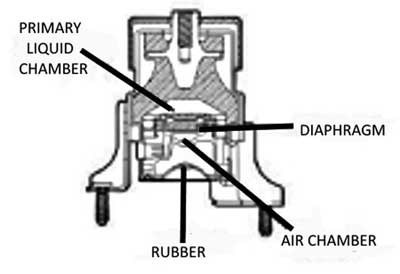A/C Groan
You may think that a bit of noise with the air conditioning turned on is not the highest priority item for a motorist. After all, if the car is running and the A/C is cooling, what’s the big deal? Well, that works for a while, but then the noise gets to the driver, and although he might not be willing to break the bank to fix it, he doesn’t want it to continue. It’s beyond just annoyance: if it isn’t normal, the motorist is likely to believe that it is something wrong, and unless it’s fixed, is likely to lead to an expensive repair.
So the car is in the shop and in this case it’s a 2005 MINI, although it could be any one of a number of cars. The technician begins with the most obvious possibility: is the compressor mount tight? Yes it is. How about the drive belt? The technician looks for a rumble at the compressor pulley and doesn’t see anything that even resembles a slight wobble. Next step is to check the power steering and water pumps both visually and with a stethoscope; nothing there. He double-checks the power steering with a helper turning the steering wheel back and forth, but still no answer.
The technician feels the high-pressure line and yes, there’s some vibration, but no affect on groan. The condenser fan came on when the system high side pressure went over 220 psi, which comes across as normal.
Okay, that’s all the visual stuff, and what’s next is a check for an applicable service bulletin. There are several A/C bulletins, but nothing seems to apply. We would suggest that you read through all bulletins in the time period that might refer to moan and vibration, because although the complaint was about moan when the A/C is turned on, that could well be just the symptom that shows up when the cause is elsewhere.
That said, the technician finally decides to just look at the engine while a helper turns the A/C on and off. With that step he can see that there’s excess vibration from the engine, which leads him to inspect the engine mounts. He spots oily goo at one of the mounts and therein lies the answer: a hydraulic engine mount leaked out its fill of oil. The fix for a defective mount (hydraulic or rubber) starts with replacement of the mount of course, but on many cars should be followed up with an alignment procedure for the mounts. Check the service information.
We’d like to note that there’s another possible cause on some cars that gets traced back to the engine mount: a diaphragm type mount with an electronic control unit that duty-cycles the diaphragm to cancel vibration at idle and in some cases just off-idle. A bad diaphragm, poor electrical connection or leaking mount could increase vibration and although engine vibration itself is unlikely to be noisy, as the MINI example shows, it can produce noise. In that case, A/C-on groan.
Many Lexus (and other cars) have an electronically controlled vacuum solenoid valve that modulates vacuum to a diaphragm unit built into a liquid-filled mount, so you have to check the electrical end, the vacuum feed and the liquid-filled section of the mount.
The metallurgy and mounting of automobile components affects the frequency at which they may produce noise. Auto engineers run all kinds of tests to excite parts of the car to determine if they are likely to produce noise. So although the A/C turned on may be the origin for the noise, the source of the noise may be anywhere in the general area.
For example, the higher density of R-1234yf resulted in a pulsation that produced a noticeable vibration/noise on the Cadillac ATS with the 2.0-liter turbo, because the A/C compressor mount was located very close to an engine mount. And although engine mounts are designed to absorb vibration, the combination of extra vibration in a specific frequency, very close to the front mount, was a problem the mount did not muffle. Either that mount will be redesigned or the compressor might be moved when the vehicle is changed over to R-1234yf.


Leave a Reply